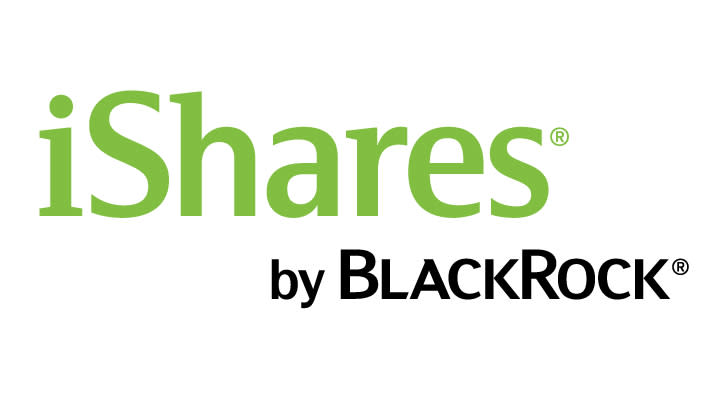5 Vaunted Value ETFs
Value investing — the effort of finding stocks that are attractively valued relative to broader equity benchmarks — is one of the most popular investment styles. That status is reflected in the world of exchange-traded funds (ETFs) where there are dozens of value funds tracking large-, mid- and small-cap domestic stocks as well international equities seen as value plays.
Over the long-term, value investing has been a winning strategy. However, in recent years, the value factor has struggled mightily against its growth and momentum counterparts, a theme that is continuing in 2018. For example, the Russell 1000 Value Index is down 1% year-to-date while the Russell 1000 Growth Index is higher by 4.6%.
Over the past three years, the Russell 1000 Growth Index is up 45% compared to just 25.4% for its value peer. Making the value bet over that period all the more hard to digest is that value stocks, as measured by the aforementioned Russell 1000, have been volatile compared to growth names.
InvestorPlace - Stock Market News, Stock Advice & Trading Tips
While it may be easy to write off value stocks and ETFs in the near-term, investors ought to remember that factor leadership changes with time. That should serve as a reminder that some of the following ETFs could be worth examining in the current environment by long-term investors.
Value ETFs to Buy: Guggenheim S&P 500 Pure Value ETF (RPV)

Expense Ratio: 0.35% per year, or $35 on a $10,000 investment.
The Guggenheim S&P 500 Pure Value ETF (NYSEARCA:RPV) tracks the S&P 500 Value Index, which focuses on book value to price ratio, earnings to price ratio, and sales to price ratio, according to Guggenheim. Proving that value investing works over the long haul, RPV is the best-performing value of the current U.S. bull market.
From March 10, 2009 through March 5, 2018, RPV delivered average annualized returns of 27.47%, good for a cumulative return of 745.67%, according to Morningstar data. Investors fortunate enough to have bought RPV on March 10, 2009 and held it until now would have seen a $10,000 investment grow into more than $88,000.
RPV turned 12 years old in early March and has 111 holdings. Like many value ETFs, RPV has a large weight to the financial services sector, almost 30%. Surprisingly, the consumer discretionary sector, which is viewed as richly valued by some market observers, is RPV’s second-largest sector allocation at 19%.
Value ETFs to Buy: iShares Edge MSCI USA Value Factor ETF (VLUE)

Expense Ratio: 0.15%
The iShares Edge MSCI USA Value Factor ETF (BATS:VLUE) follows the MSCI USA Enhanced Value Index, an index that uses a different approach than some more traditional value strategies. This value fund’s benchmark emphasizes price-to-book value, price-to-forward-earnings and enterprise-value-to-cash flow from operations.
VLUE’s results cannot be argued with, as it has outperformed the Russell 1000 Value Index by 920 basis points over the past 36 months.
This value fund offers some sector-level surprises. For instance, nearly 26% of VLUE’s 150 holdings are technology stocks, including a 10% weight to Apple Inc. (NASDAQ:AAPL). Compared to traditional value funds, VLUE’s tech weight is large. Including Apple, the ETF’s top three holdings are all tech stocks. Financial services and healthcare names combine for 28% of the fund’s roster.
Value ETFs to Buy: Guggenheim S&P SmallCap 600 Pure Value ETF (RZV)

Expense Ratio: 0.35%
As was noted earlier, over long holding periods, value stocks can shine. So can small-caps. Put the two together and there is a potentially potent scenario with small-cap value names.
Actually, historical data confirm the efficacy of small-cap value. So does the Guggenheim S&P SmallCap 600 Pure Value ETF (NYSEARCA:RZV).
RZV, the small-cap answer to the aforementioned RPV, is the best-performing small-cap ETF of the current bull market. Since the start of this bull market, RZV has delivered average annualized returns of 25.5%, good for a cumulative return of 670%, according to Morningstar data as of March 5, 2018. That is a dominating performance over the second-best small-cap ETF of this bull market.
RPV holds 165 stocks, 31% of which are consumer discretionary names. The drawback with small-cap value names is the same as with their large-cap peers: when value is out of style, these stocks languish. Over the past three years, a rough period for value, RZV has been topped by the S&P SmallCap 600 Index by a margin of better than 2-to-1.
Value ETFs to Buy: Cambria Global Value ETF (GVAL)

Expense Ratio: 0.69%
The value phenomenon is not confined to U.S. borders. The Cambria Global Value ETF (NYSEARCA:GVAL) is globe-trotting value fund that has a selection universe of 45 countries, including developed and emerging markets.
GVAL focus on the cyclically-adjusted P/E ratio (CAPE) then applies a bottom-up value screen comprised of more traditional metrics, such as price-to-earnings, price-to-book, price-to-sales and others. Today, GVAL holds 141 stocks from 12 countries, five of which are emerging markets. Led by Austria and Portugal, five of GVAL’s 12 country exposures are Eurozone nations.
As is the case with many domestic value ETFs, GVAL is heavily allocated to financial stocks, with that sector representing 28.1% of the fund’s weight. GVAL has delivered better than double the returns of the MSCI All-Country World ex-US Index over the past three years.
Value ETFs to Buy: SPDR Portfolio S&P 500 Value ETF (SPYV)

Expense Ratio: 0.04%
Investors looking for extra value with their value ETFs should check out the SPDR Portfolio S&P 500 Value ETF (NYSEARCA:SPYV). With its annual fee of just 0.04%, SPYV is, at least for the moment, the least expensive value ETF in the U.S.
SPYV follows the S&P 500 Value Index, which focuses on the book value to price ratio; earnings to price ratio; and sales to price ratio, according to State Street. This value ETF is a basic strategy for this particular investment factor, meaning large weights to financials and energy stocks. Those sectors combine for 37% of SPYV’s weight.
The $1.38 billion SPYV has some decent metrics, including an SEC yield of 2.4%, a return on equity of 21.20% and a price-to-cash-flow ratio of 10.52.
As of this writing, Todd Shriber did not own any of the aforementioned securities.
The post 5 Vaunted Value ETFs appeared first on InvestorPlace.
